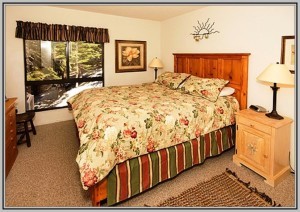The room I occupied was heat and the device wasn’t adequate. For practical reasons, convertible baby cribs are the types for keeps. Third, consider the additional features available. Oh the creaks and moans the subsequent morning!Before you head to a furniture warehouse in London, there are some issues you should know about picking out furnishings that best matches your needs. Purchasing from a warehouse can conserve you some money, but you are nonetheless making an expense when you are purchasing furniture. That’s why it’s important to know what you are searching for and how to inform if furnishings is great quality or not.
One of the main advantages of a pop up trundle is the capability to increase the trundle to the height of the standard mattress and to be able to place them together in purchase to produce a
how big is a king size bed in feet for your visitors. This should be an easy and straight forward procedure. It is essential to verify that your trundle arrives with the correct catches to link the two together. Otherwise you might find that you visitors have an ever widening gap down the middle of their bed.
Queen dimension - If you have a
how big is a queen size bed in feet, then the mattress or equipped sheet that you should buy should measure 60 x eighty inches or 153 x 203 cm. In the meantime, the flat sheet size and comforter size should be ninety x 102 inches (228 x 259 cm) and 86 x 86 inches (218 x 218 cm), respectively.

A
how big is a full size bed in feet is what a lot of people often see. A full dimension crib usually actions roughly 52 inches in size by 28 inches broad. A full dimension crib requires a mattress that fits in it perfectly, these are effortlessly available. You should never jeopardize your baby’s safety, so the mattress requirements to be safe and fit snugly in the crib. Convertible cribs are a popular style in full dimension cribs. An infant does not require a standard crib when he matures, convertible beds can be altered into a toddler mattress. The items of the crib can be remodeled to be a bed headboard which matches onto a twin or full dimension mattress body when the toddler bed will no lengthier be required, primarily based on the crib brand.
Consider the style and style of the comforter. It is perfect that the mattress skirt, pillow instances and comforter match. It wouldn’t be satisfying in the eyes to see a bed room established that has dissimilar styles and designs. It is once more perfect to purchase everything in sets so we can see correct absent that every thing blends nicely with each other. A wonderful instance for this is the Aico bedroom set. Finally, verify if the supplies within the comforter are evenly distributed.
Safety is an important problem when choosing a crib, besides size. A number of designs are recalled annually. Correct prior to acquiring, a model should to be examined for each recall. Remember the fact that drop aspect cribs are not secure when purchasing a second hand or having an older crib. To alter a drop side to a safer fixed crib, you can speak to the company to gain a conversion package.
Remove pointless items of furnishings and clutter. Furniture that serve many functions is a great way to conserve space and reduce clutter. Storage containers are a great substitute for little items of furnishings. The containers can be bought with or with out wheels and kept concealed under the bed or in the closet. The concept is to maintain the essential big pieces of furnishings in the room and eliminate the smaller types. For instance, one large dresser rather of two smaller sized dressers.
For real time out, then a remain at Arajilla, Lord Howe’s premier luxury retreat, will be soothing to your soul. Lord Howe is just 2 hours flight from Sydney and as customer numbers are restricted on the Island, you will have all the privateness you require. Swim, dive, fish or discover the Island to your coronary heart’s content material. Appreciate meandering along the board walks lined with Kentia palms. With all the comforts of home, including seaside towels, there is absolutely nothing to deliver but your garments. Appreciate a sumptuous supper following a full breakfast and light lunch, all inclusive. A magnificent haven for all.
Source:
http://scottxstephens.tumblr.com/post/133475804705/four-fantastic-bed-and-breakfasts